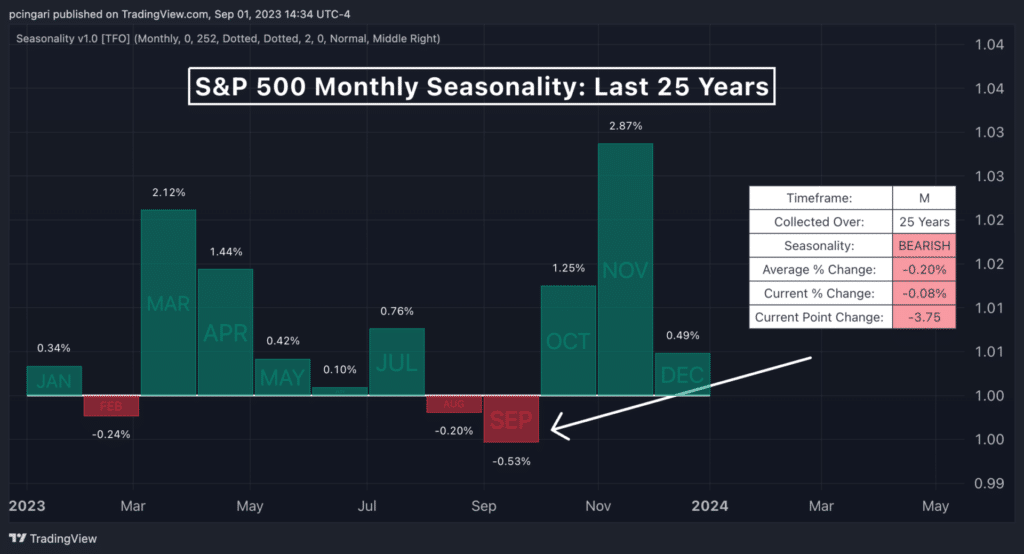The Importance of Market Internals in Trading
The Importance of Market Internals in Trading
Unveiling the Hidden Dynamics

In the ever-evolving world of trading, where fortunes can be made and lost in the blink of an eye, a deep understanding of market internals is paramount. While external factors such as economic news and geopolitical events undoubtedly influence market movements, it’s the underlying forces within the market itself that often provide the most valuable insights into its true direction and potential turning points. In this comprehensive guide, we’ll delve into the intricacies of market internals, explore their significance, and reveal how you can leverage them to enhance your trading strategies.
What Are Market Internals?
Market internals, also known as market breadth indicators, are a collection of technical tools that assess the overall health and strength of the market by analyzing the behavior of individual stocks or sectors within it. They provide a deeper look beyond the major indices, revealing the underlying trends and sentiment that may not be immediately apparent on the surface. By examining the participation and performance of various market segments, traders can gain valuable insights into the true strength or weakness of a market move.
Why Are Market Internals Important?
Market internals offer several compelling advantages that make them an indispensable component of any trader’s arsenal:
-
Confirming or Contradicting Market Trends: While major indices like the S&P 500 or Dow Jones Industrial Average may suggest a bullish or bearish trend, market internals can confirm or contradict this narrative. For instance, if the indices are rising but market breadth indicators are weakening, it may signal a potential reversal or a lack of conviction in the upward move. This divergence between price action and market internals can be a powerful early warning sign for traders.
-
Identifying Potential Turning Points: By closely monitoring market internals, traders can identify early signs of a potential market top or bottom. For instance, a divergence between advancing and declining stocks, or a shift in the number of new highs and new lows, can be a powerful indicator of a change in market direction. These subtle shifts in internal dynamics can often precede major market reversals, providing traders with valuable opportunities to adjust their positions accordingly.
-
Gauging Market Sentiment: Market internals can provide a valuable gauge of overall market sentiment. A strong and broad-based rally across various sectors and stocks suggests positive sentiment and confidence, while a narrow advance with weakening breadth indicators may indicate underlying concerns and potential selling pressure. Understanding market sentiment is crucial for anticipating future price movements and making informed trading decisions.
-
Uncovering Sector Rotation: Market internals can reveal sector rotation, where capital flows from one sector to another. By tracking the relative strength and weakness of different sectors, traders can identify emerging trends and adjust their portfolios accordingly. This enables them to capitalize on opportunities in sectors that are attracting investor interest and avoid sectors that are falling out of favor.
-
Risk Management: By incorporating market internals into their analysis, traders can improve their risk management strategies. For instance, if market breadth indicators are deteriorating, it may be a sign to reduce exposure or tighten stop-loss levels. This proactive approach to risk management can help traders protect their capital and navigate turbulent market conditions more effectively.
Key Market Internals to Monitor
[Image Suggestion: A table or infographic showcasing various market internals with their corresponding interpretations]
There are numerous market internals available, each offering unique insights into different aspects of market dynamics. Some of the most commonly used include:
-
Advance-Decline Line: This indicator tracks the difference between the number of advancing and declining stocks on a given day. A rising advance-decline line confirms a bullish trend, while a falling line suggests a bearish trend. This simple yet powerful indicator provides a quick snapshot of the overall market breadth.
-
New Highs-New Lows: This indicator compares the number of stocks making new 52-week highs to those making new 52-week lows. A rising number of new highs relative to new lows indicates a healthy market, while the opposite suggests weakness. This indicator can help identify potential shifts in market momentum and sentiment.
-
Up Volume-Down Volume: This indicator compares the volume of shares traded in advancing stocks to those traded in declining stocks. A higher up volume indicates buying pressure, while a higher down volume suggests selling pressure. This indicator can reveal the underlying strength or weakness behind price movements.
-
McClellan Oscillator: This indicator uses a combination of advancing and declining issues to gauge market breadth and identify potential overbought or oversold conditions. It can help traders anticipate potential reversals or pullbacks in the market.
-
Put-Call Ratio: This indicator measures the ratio of put options (bearish bets) to call options (bullish bets). A rising put-call ratio suggests increasing pessimism and potential selling pressure. This indicator can provide insights into investor sentiment and potential market direction.
-
Short Interest: This indicator tracks the number of shares sold short (a bet on falling prices). High short interest can indicate potential buying pressure as short sellers may eventually need to cover their positions. However, it can also be a sign of bearish sentiment.
-
Margin Debt: This indicator measures the amount of money borrowed by investors to purchase securities. Rising margin debt can fuel market advances but can also lead to increased volatility and potential sell-offs if margin calls are triggered.
Interpreting Market Internals: A Case Study
[Image Suggestion: A chart illustrating the divergence between a major index and market breadth indicators, foreshadowing a market reversal]
Let’s consider a hypothetical scenario where the S&P 500 index is making new highs, but market internals are showing signs of weakness. The advance-decline line is flattening or declining, the number of new highs is shrinking, and the up volume-down volume ratio is deteriorating. These divergences suggest that the rally is becoming increasingly narrow and reliant on a few large-cap stocks, while the broader market is losing steam. This could be a warning sign of a potential market top or correction.
In this case, a prudent trader would exercise caution despite the seemingly bullish price action of the major index. The weakening market internals suggest that the underlying strength of the market is waning, and a reversal or pullback may be imminent.
Integrating Market Internals into Your Trading Strategy
Market internals can be integrated into various trading styles and strategies, enhancing their effectiveness and providing valuable insights. Here are a few examples:
-
Trend Following: By confirming market trends with strong breadth indicators, traders can increase their confidence in entering and holding positions. This can help them avoid false breakouts and ride the trend for longer durations.
-
Mean Reversion: Divergences between price action and market internals can signal potential reversals, providing opportunities for mean reversion trades. Traders can use these divergences to identify potential entry points for short positions or to exit long positions before a market downturn.
-
Sector Rotation: Identifying sectors with strong breadth characteristics can lead to profitable trades as capital flows into those areas. By analyzing market internals, traders can spot emerging trends and allocate their capital to sectors that are showing relative strength.
-
Risk Management: Monitoring market internals can help traders adjust their risk exposure based on the underlying health of the market. If market breadth indicators are deteriorating, it may be a sign to reduce position sizes, tighten stop-loss levels, or even consider taking profits.
Advanced Techniques and Considerations
For traders seeking to delve deeper into market internals, there are some advanced techniques and considerations to explore:
-
Weighted Breadth Indicators: These indicators assign greater weight to the performance of large-cap stocks, reflecting their greater impact on the overall market.
-
Custom Breadth Indicators: Traders can create their own breadth indicators based on specific criteria or sectors, tailoring their analysis to their individual trading strategies.
-
Intraday Breadth Analysis: Monitoring market internals on an intraday basis can provide even more timely insights into market dynamics and potential short-term trading opportunities.
-
Combining with Other Technical Tools: Integrating market internals with other technical indicators, such as moving averages, oscillators, and chart patterns, can create a more robust and comprehensive trading strategy.
-
Fundamental Analysis: While market internals are primarily technical tools, combining them with fundamental analysis can provide a more complete picture of the market and individual stocks.
Conclusion
Market internals offer a powerful lens through which traders can gain a deeper understanding of the underlying dynamics of the market. By incorporating these indicators into their analysis, traders can confirm or contradict market trends, identify potential turning points, gauge market sentiment, uncover sector rotation, and enhance their risk management strategies.
Remember, successful trading is not just about picking the right stocks or timing the market perfectly. It’s also about managing risk and adapting to changing market conditions. Market internals can be a valuable tool in achieving these goals and navigating the complex world of trading with greater confidence and success.
Pro Tip: Don’t rely solely on market internals. Combine them with other technical and fundamental analysis tools to gain a comprehensive understanding of the market and individual stocks.
Check out our articles on:
- Introduction to Options Trading
- Mastering Butterfly Spreads
- The Power of Diagonal Spreads
- The Power of Iron Condors
- The Power of Vertical Credit Spreads
Elevate Your Options Trading Skills
Ready to master trading options? Join our community for in-depth education on options trading, live trading sessions, and expert analysis of options trading strategies. Sign up today to start profiting from market swings using advanced options trading strategies!
Below are the links:
To your success,

Billy Ribeiro is a renowned name in the world of financial trading, particularly for his exceptional skills in options day trading and swing trading. His unique ability to interpret price action has catapulted him to global fame, earning him the recognition of being one of the finest price action readers worldwide. His deep comprehension of the nuances of the market, coupled with his unparalleled trading acumen, are widely regarded as second to none.
Connect with us:






